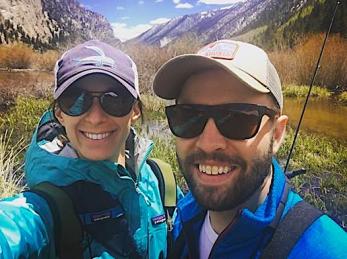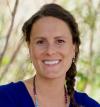- SLHS/CDSS ALUMNI SPOTLIGHTS!
- Melanie Potock '93
- Shirley Padilla (Manzanares) '89
- Cathy Lauderbaugh '12
- Niki (Roby) Gewirtz '94
- Sarah Treharne '10
- Chris Zwolfer '99
- Jessica Lugo '10
- Jennifer Hickam Flenniken '05
- Nicole Davis '06
- Jennifer Spielman 2000
- Karen Durek '05
- Judith King '89
- Nancy Ohlmann '88
- Sheila Cullen '92
- Caroline Abourezek '94
- Katie (Hauser) Price '05
- Pippa May 2000
- Patti Sorkow '90
- Brett Kluetz '98
- Kate Hoover '08
- Carol Pastore '74
- Jennifer Shroyer '97
- Jeff Steffen '89
- Kathe Perez '86
- Amanda Vargo '08
- Amy Bell '08
- Carol Messier '04
- Katy Kronenwetter '92
- Keiko Gondo '85
- Kate Ingmundson '88
- Laura Biegner '85
- Susan Elling '86
- Sherry (Ferguson) Baum '85
- Brian Simms 2000
- Patty (Ogrodnick) Walton '85
- Mary Wallace '83
- Tracy (Martischang) Kovach '96
- Mark Guiberson '99
- Anne Gardner '76
- Amy Thrasher '97
- ALUMNI PHOTO GALLERY
- UPDATE US ON YOU!
- SEND US YOUR WEBSITES
- CONTACT SLHS FACULTY
Inspiration Series #5: A Year of Professional Growth: Emily Nauman (’12)
Submitted by SLP_Admin on Wed, 11/15/2017 - 18:06
 Emily Nauman graduated from SLHS with a Bachelor's degree in December of 2012 and earned her Master's in May of 2015. Emily had always been interested in pursuing a degree and profession that helps people. She credits her studies at SLHS for her solid foundation and experience in our field:
Emily Nauman graduated from SLHS with a Bachelor's degree in December of 2012 and earned her Master's in May of 2015. Emily had always been interested in pursuing a degree and profession that helps people. She credits her studies at SLHS for her solid foundation and experience in our field:
I was provided with rigorous but relevant academic courses, projects, assessments and clinical experiences. One of the best and most challenging learning experiences for me was going through oral and written comprehensive exams. We were presented with 4 case studies, each containing a past history and diagnostic scores from various assessments. In our exams, we were to determine a diagnosis based on the provided scores and develop an evidence based treatment plan. We picked one case study to write about and then orally defend to a panel of 4 professors, but we also had to know about the other 3 other case studies as our panel could ask any question they liked about diagnosis and treatment plan for them. While this process was intense, it truly reflected knowledge and skills an SLP needs in every day situations. We must gather information about a patient's background and past medical history, we must select the appropriate assessments to gain the right information needed to make an accurate diagnosis. We must then interpret the scores of the assessment and develop an evidence based treatment plan. No matter what setting an SLP works in, these are the foundational elements to every day patient care.
As an undergrad, I completed the Speech-Language Pathology Assistant SLPA internship program. This program is what made me decide to pursue my Master's Degree in speech language pathology. While I had learned foundational knowledge needed to understand speech and language disorders in the classroom, it was during my SLPA internship that I saw my learning come alive. I experienced first-hand how a SLP could so tangibly help people of all ages in the basic right of communication.
Emily is currently a speech language pathologist at National Jewish Health (NJH) in Rehabilitation Services.
As a member of a team at NJH, one area I'm truly passionate about is researching and creating innovative assessment and treatment for Exercise Induced Laryngeal Obstruction (EILO), also known as exercise induced Paradoxical Vocal Fold Motion (PVFM). For those who may not be familiar, EILO is s a common condition characterized by the throat paradoxically closing during exercise. EILO can dramatically increase breathing difficulty and diminish athletic performance. I have the opportunity to work alongside amazing SLPs (many whom are CU graduates) and doctors at National Jewish Health in Denver, CO. Working together, we are researching this disease and developing more effective diagnostics and novel treatment techniques to treat this disease. It is so exciting to be a part of groundbreaking research and treatment in this area of speech pathology.
Emily observes that EILO is not well understood. She and her team want to change that.
What we are finding in our research at NJH is that many patients who have EILO do not get better with traditional treatment methods. Traditional treatment methods can include pursed lip breathing techniques, vocal exercises and relaxation techniques, /s/, /f/ or /sh/ breathing, diaphragmatic breathing, etc. Many patients who trigger during high intensity exercise do not experience any benefit with these methods and therefore are prone to being left untreated. This not only leads patients to frustration over their untreated condition, but also clinicians. As SLPs, we want the best for our patients. We want our patients to get better, so the question we are attempting to answer is "What do you do when your patient isn't getting better?" Dr. Olin at NJH has developed a new breathing technique called The Olin EILOBI Breathing Technique. EILOBI stands for exercise-induced laryngeal obstruction biphasic inspiration.
The EILOBI is a breathing technique patient's can use during high intensity exercise to prevent and/or manage EILO. In our research study, we had 64 subjects who failed conventional therapy. Most of these patients competed at the high school varsity level evaluated our techniques and teaching process. We found that about 80% of the subjects positively evaluated the teaching process and were able to use the techniques during their activity of choice, and about 2/3rds of the subjects perceived clinical effectiveness by using the technique. While this technique is innovative and appears to be a promising therapy approach, it is very complex to learn because the techniques are not intuitive or natural. Only by multiple sessions of intensive learning with providers can patients learn and breathe comfortably during high intensity exercise.
 Focused research and passion has led Emily to publish and present research articles with co-workers, some who are also CU graduates.
Focused research and passion has led Emily to publish and present research articles with co-workers, some who are also CU graduates.
This year I had the opportunity to co-author a research article with a few of my fabulous co-workers titled The Olin EILOBI Breathing Techniques: Description and Initial Case Series of Novel Respiratory Retraining Strategies for Athletes with Exercise-Induced Laryngeal Obstruction. Lead author Kristina Johnston, a fellow CU grad has been an incredible mentor for me throughout my clinical fellowship and career. Kristina has been working closely with Dr. Tod Olin in this area alongside another co-author and CU grad, Heather Hodges.
Recently CBS News Denver featured a story (link) on the team's work. Their plan to make EILO better understood is working and Emily is not finished with her pursuits. She tells us that the team will continue to research and run trials of the innovative breathing technique with the patients they see at NJH. In addition, Emily was provided with an opportunity to present their new research and innovative breathing technique at the 2017 Fall Voice Conference in Washington D.C . "This conference is primarily held for speech language pathologists and laryngologists throughout the United States. It was a great honor to be able to present this new information to fellow clinicians and nationally known laryngologists." Emily and the team plans to extend their research on EILOBI breathing technique by adding a novel method of using direct visualization of the larynx during exercise as a means of biofeedback. They hope to teach other SLPs around the nation about this breathing technique so they can start helping their patients who are not responding to traditional therapy for EILO. Emily tells us, “Stay tuned for more exciting developments!”
Our CU alumni are well represented at NJH and Emily is happy to continue relationships will fellow alumnae Kristina Johnston and Heather (Gustafson) Hodges (photo left: Kristina, Heather and Emily are pictured right and former NJ employees and CU graduates Julie Bergquist in the middle and Hillary Ligon (Lisi) on left. Emily tells us that she has many other CU friends who are in the schools and other hospitals in Denver, such as Craig Hospital. SLHS is well represented in our state!
Outside of work, Emily loves to spend time with friends and family. “I greatly enjoy running, hiking and fly fishing. I often spend my weekends in the mountains with my husband finding new streams to fish or hiking trails to wander. I also enjoy a good book and a glass of wine.”
Much continued success in all of your pursuits, Emily!




































